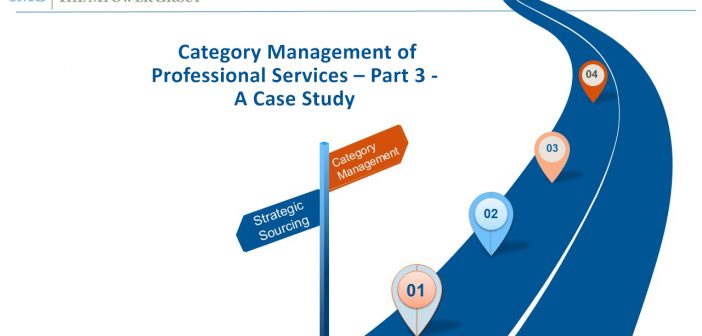“Hugely successful Value Driver based negotiation on a $150 M spend in the very complex and critical category of Engineering Services (for one of the largest Utilities). Sourcing team not only exceeded savings targets but also enhanced the credibility and reputation of the sourcing organization by insisting on achievement of ALL Stakeholder Value Drivers (as defined by the Stakeholders) – and cost was just a small piece of them. Adoption of Category Management (CM) at its best”
If that is what you would like to hear about your team’s results, then you can’t depend on your X (pick your favorite number) chevron sourcing process. It may sound counter intuitive but that will actually not only reduce the achievement of the Stakeholder Value Drivers (SVD) but also a reduction in savings achieved. It’s when our Stakeholders know that our focus is on their Value Drivers that we actually start achieving higher savings. And by the way, it’s not just higher savings but faster savings, savings that have a longer shelf life and savings that increase over time.
The situation:
- One of the largest public utilities, 11 states, 5.5 million customers
- Large spend (let’s say between $100m – $250m), dissatisfied new Executive Stakeholder
- Highly fragmented buy, well entrenched suppliers, lack of metrics to measure supplier performance
- Significant improvement opportunities in demand processes (Define, Review, Approval) before the buy – Segment 1 Below
- Significant improvement opportunities in Supplier Relationship Optimization processes after the buy – Segment 3 Below
- Etc. etc. – this situation should sound familiar to most of you?
This happens to be one of our “best” clients because they have achieved the highest value from what we have collaborated on with them over the years and we were asked to take on this challenge by the CPO for this BU. He has been very successful in leading a transformation there and was therefore fully on board with the approach (and his role in this engagement was critical to the success).
Here are some of the results that were achieved:
- Streamlined contracts with refreshed mix of committed suppliers
- Risk reduction
- Significantly improved relationship/trust/credibility between sourcing and stakeholders
- Helped Stakeholders define their Value Drivers and drove entire CM process based on them
- Created recommendations to re-engineer their demand generation (definition, review, approval, estimating, planning etc.) – Segment 1 Below
- Roadmap to optimize relationship with suppliers – Segment 3 Below
- Committed team of stakeholders that drove the sourcing process AND took ownership for Adoption
- Launched a Center of Excellence for ongoing Category Management – Segment 3 Below
- Developed metrics to ensure that Value Drivers for ALL (including suppliers) are exceeded
- And, YES, significantly improved rates!!

Before getting into the specifics of what we did that was different, at the meta level, we made sure that we focused on all three segments of the picture above (all TMG alumni will recognize this 😊). Category Management means that we must focus on the events prior to sourcing (segment 1) and the events post sourcing (segment 3) because that’s where almost ALL of the SVDs are buried deep and the Stakeholders know it. By focusing on just the sourcing section (segment 2), we not only sacrifice SVDs but also sub optimize the savings achieved. Even if we are successful(highly doubtful) in identifying savings (new contract) without it, the achievement of those savings is highly dependent on stakeholder collaboration? And that collaboration is totally dependent on SVDs.
Approach Differentiators:
- Ensured early and ongoing commitment of Executive Stakeholder by focusing on their Value Drivers (as defined by them)
- Formed a stakeholder team and made them responsible for supplier selection (had to be based on the SVDs which did not ignore rates) and justifying those decisions to their Executive Stakeholder
- Established Governance and Decision Making and stuck to it
- Active Change Management from engagement launch
- Re-defined the Value Proposition for suppliers
- Transformed supplier focus to SVDs and not just rates
- Ensured that suppliers knew that they were considered a Stakeholder as well
- Suppliers invited to deliver Best Practices to help in all 3 segments above
- Established a COE for ongoing focus on segments 1 and 3
- Focus on Adoption of the solution post contract – part of Ongoing Management of Category(segment 3)
- Supplier Relationship Management Optimization structure – part of Ongoing Management of Category (segment 3)
- And YES, we did do the market analysis, RFPs, price analysis, negotiation play books, etc. etc. etc. (segment 2) – think we had 7 chevrons 😊.
As always, we invite critiques and comments.

